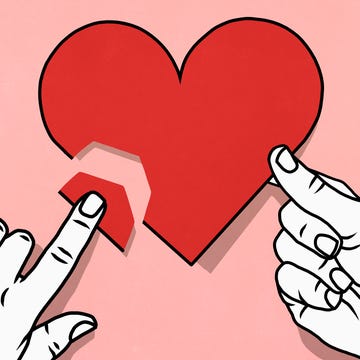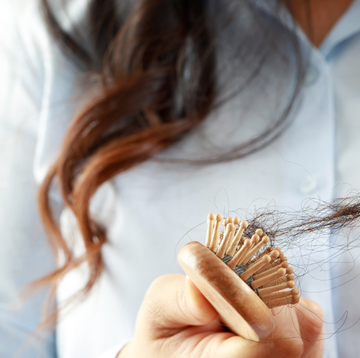Try as we might to delay it, battle it or throw money at it, it remains a stubborn fact of life. Our skin changes as we age. Wrinkles, skin tags, dryness and more all become more common and are usually entirely benign, if a little unwelcome. But is that thinning eyebrow or redder nose just a symptom of a life well lived? Or could it signal something more concerning?
‘The skin is the largest organ in the body, and as such it serves as a very visible indicator as to how things are ticking over inside,’ says Dr Anatalia Moore, an NHS GP and a specialist in both skin and ageing.
In fact, she says, changes to our skin can sometimes serve as useful early warning signs about underlying health conditions, ones that might well merit a precautionary trip to the GP. So what should you look out for?
1 White bumps
Ever noticed white bumps around the eye or on your eyelids? These are most likely milia – completely benign blockages in your sebaceous glands that cause small white bumps.
That said, the same area can host xanthelasma, which are white deposits of cholesterol, explains Dr Moore. While milia pose absolutely no problems, xanthelasma – while harmless in themselves – could be an early warning sign of something more serious. ‘If these appear in a younger individual, this can point to a hereditary issue leading to poor regulation of cholesterol,’ says Dr Moore.
There’s plenty that can be done about it, she adds: ‘At any age, high cholesterol levels should be brought down by a combination of lifestyle changes and medication as appropriate, as this fat is responsible for obstructing blood vessels and, if left unchecked, is associated with serious conditions such as heart attack and stroke.’
So if you think you might have xanthelasma, speak to your doctor about checking your cholesterol levels.
2 Darker pigmentation
The skin on your arms and around your collar line is prone to hyperpigmentation, since these areas often get irritated. ‘Irritated skin is inflamed skin, and where irritation happens on a regular basis, pigment can become deposited. If the skin barrier is repaired and irritation is avoided, the pigmentation will lessen over time,’ explains Dr Moore. So no drama.
Acanthosis nigricans, though, is often found in similar areas. A darker form of pigmentation, almost velvety in appearance, it can be a sign of persistently high blood sugar levels and conditions including diabetes and obesity, she says.
It’s harmless in itself, but your doctor will want to explore these possible causes and help you address them, if necessary.
3 Thinning eyebrows, dry skin and puffy face
‘Hair loss can be caused by a multitude of concerns. However, if your hair is thinning, becoming generally brittle and dry and, in particular, you are noticing a loss of the outer parts of your eyebrows, this should act as a cue to consider checking your levels of thyroid hormones,’ says Dr Moore.
Low thyroid hormones can also show up as very dry and scaly skin, she says, as well as puffiness around the eyes and face. So if you have these symptoms, particularly if they have lingered for a while in combination with tiredness or low mood and anxiety, then it’s a good idea to book an appointment with your doctor, just to check.
4 Itchy hands and feet
Itchy skin is irritatingly common, especially during the winter months as skin becomes dehydrated. It is, however, quite rare for that itching to extend to the palms of your hands or the soles of your feet, says Dr Moore. “Itching on the feet associated with peeling of the skin tends to be athletes foot. There’s also a type of eczema that appears as small fluid filled spots and can occur in both hands and feet,” says Dr Moore.
In the absence of these visible signs though: “itching should prompt a visit to the doctor where they will likely wish to check blood tests to ensure the liver and kidneys are functioning correctly.” That’s because generalised itching that includes the soles and palms can sometimes be caused by poor kidney function. So it’s best to get checked.
5 Redness on your cheeks and nose
Many people, especially women, experience some redness over their cheeks and nose, says Dr Moore, and put it down simply to the ageing process.
But a malar rash – that’s one that extends over the nose, cheeks and on to the forehead – can also be a sign of rosacea. ‘This rash can be managed through a mixture of lifestyle advice and skincare,’ explains Dr Moore.
However, it can also, rarely, be a sign of lupus, an autoimmune condition. ‘Lupus can trigger inflammatory processes through the whole body, which causes a wide spectrum of symptoms that are all very commonly put down to ageing or simply being busy or run-down,’ says Dr Moore. ‘If you’re experiencing a rash on your face in the shape of a butterfly, alongside other persistent symptoms such as aches and pains, joint symptoms, fatigue, feeling hot, hair loss or vision deterioration, it’s highly worth having a chat with your doctor and getting blood tests.’













